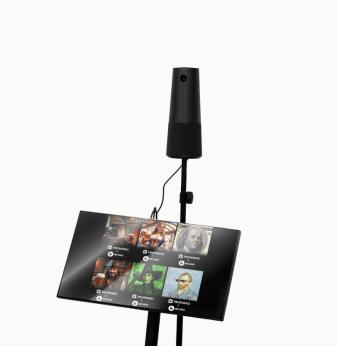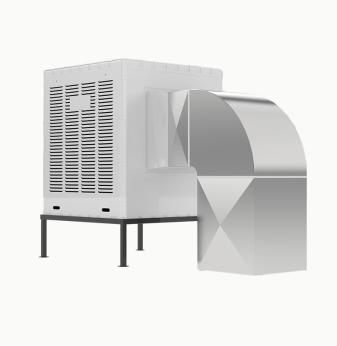Deploying AI Models at the Edge: Challenges and Best Practices

As artificial intelligence continues to transform industries, the focus has shifted from centralized cloud-based processing to edge AI — running AI models directly on local devices. Edge AI offers benefits such as real-time processing, enhanced privacy, reduced bandwidth consumption, and offline functionality. However, deploying AI models at the edge presents unique challenges that developers and hardware engineers must overcome.
In this article, we’ll explore the key challenges of deploying AI models at the edge, provide best practices for development and deployment, and address specific technical questions asked by engineers in the field.
What Are the Challenges of Deploying AI Models on Edge Devices?
Edge AI deployment is technically demanding due to constraints that are not present in cloud-based systems. The most common challenges include:
1. Limited Compute Resources
Edge devices typically lack the GPU or TPU power found in data centers. Developers must optimize models to run on microcontrollers (MCUs), low-power CPUs, or specialized edge accelerators.
2. Power Constraints
Devices like sensors, wearables, and drones are battery-powered, requiring ultra-low-power processing. Standard AI models must be quantized or pruned to fit energy profiles.
3. Latency Requirements
Applications such as autonomous navigation, predictive maintenance, or anomaly detection often require millisecond-level response times. Cloud round-trips introduce unacceptable delays.
4. Thermal Management
Running AI models continuously on small form-factor devices can lead to overheating. Design teams must balance model complexity with thermal output.
5. Memory Limitations
Memory footprints are restricted — some MCUs offer less than 256KB RAM. Developers must use memory-efficient formats like int8 and use model compression techniques.
6. Hardware Heterogeneity
The AI model must often run across a range of devices: from Raspberry Pi to custom ASICs or FPGAs. Portability becomes a major engineering concern.
How to run AI models on microcontrollers with limited memory
- Use quantization (e.g., TensorFlow Lite for Microcontrollers).
- Apply model pruning to remove unimportant parameters.
- Compress weights and use sparse matrix operations.
- Load models from flash memory in segments rather than storing in RAM.
- Use fixed-point arithmetic instead of floating point.
Best Practices for Deploying AI at the Edge
Successfully deploying edge AI solutions requires a combination of model optimization, system-level design, and toolchain expertise.
1. Select the Right Hardware Platform
- MCUs (e.g., STM32, NXP): for simple AI tasks like gesture detection.
- MPUs (e.g., i.MX, Jetson Nano): for moderate tasks like object classification.
- FPGAs/ASICs: for custom low-latency, high-efficiency deployments.
2. Model Optimization Techniques
- Quantization: Convert float32 to int8 to reduce memory and computation.
- Pruning: Remove less significant model weights.
- Knowledge distillation: Train a smaller model (student) from a large one (teacher).
- Operator fusion: Merge layers to reduce latency.
3. Use Dedicated Edge AI Frameworks
- TensorFlow Lite for Microcontrollers
- Edge Impulse
- ONNX Runtime for Edge
- OpenVINO
4. Real-Time Operating Systems (RTOS)
Using RTOS such as Zephyr or FreeRTOS ensures predictable scheduling, low latency, and hardware abstraction. This is essential for safety-critical applications like robotics or medical devices.
5. Testing and Validation
- Test model inference times in the real target environment.
- Include corner cases and simulate variable lighting, noise, or load.
- Perform regression tests when updating models.
6. Security by Design
- Encrypted model storage
- Secure boot and firmware signing
- Runtime integrity checks
Best AI model formats for edge deployment
- .tflite: optimized for TensorFlow Lite environments
- .onnx: portable across toolchains
- int8 models: lightweight and hardware-accelerated on many platforms
- .bin weights with custom interpreters: for proprietary MCUs

Application Examples of Edge AI Deployment
- Smart Cameras: Use object detection models (e.g., YOLO-tiny) for real-time recognition without sending footage to the cloud.
- Predictive Maintenance: Run vibration signal classifiers directly on equipment-mounted devices to detect faults early.
- Agricultural Drones: Deploy AI-based crop monitoring with real-time NDVI image segmentation models on edge processors.
- Industrial Robots: Execute visual servoing or path-planning using AI models locally to reduce latency and bandwidth use.
How to reduce latency in edge AI inference
- Use fused operators and fewer layers
- Deploy on optimized silicon (e.g., Coral Edge TPU)
- Use batch size = 1 for real-time inference
- Offload preprocessing to dedicated hardware
Future Trends in Edge AI Deployment
- TinyML Expansion: TinyML enables running ML on sub-mW MCUs. Growth in optimized toolchains (like TVM and CMSIS-NN) will make AI ubiquitous in ultra-low-power devices.
- Edge + 5G + Cloud Collaboration: Edge devices will continue to collaborate with the cloud, dynamically adjusting compute location based on bandwidth, latency, and privacy needs.
- AI Model Auto-Compression: Emerging solutions automatically compress large foundation models into edge-suitable deployments — powered by AI compilers and neural architecture search (NAS).
Final Thoughts
Deploying AI models at the edge is a game-changer — enabling real-time intelligence and independence from connectivity. However, this requires a disciplined approach to hardware selection, model design, and runtime integration. By understanding the specific challenges and applying best practices, you can bring powerful AI functionality to even the smallest devices.
Ready to scale your edge AI deployment? Let's talk!
Our Case Studies








